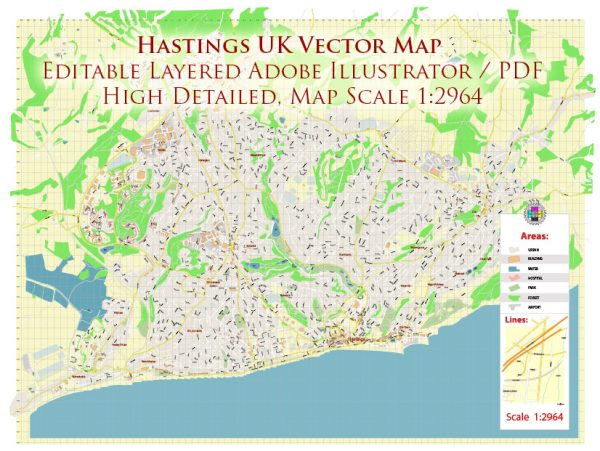Hastings, a historic town on the south coast of England, has a rich history of urban development that spans centuries. Here is a brief overview of key points in the history of Hastings’ urban development:
- Early History: Hastings has ancient origins, with evidence of human settlement dating back to prehistoric times. The town’s name is derived from the Old English words “haes” (meaning brushwood) and “ing” (meaning people), suggesting that it was initially a clearing in the woods inhabited by a group of people.
- Norman Conquest and the Battle of Hastings (1066): One of the most significant events in Hastings’ history was the Norman Conquest of England in 1066. The Battle of Hastings took place nearby, and it marked the beginning of Norman rule in England. William the Conqueror built Hastings Castle soon after the conquest.
- Medieval Period: Hastings developed as a fishing and trading port during the medieval period. The town grew around the castle, and a medieval street pattern began to take shape. The fishing industry played a crucial role in the local economy, and the Old Town area still retains its medieval layout and charm.
- Renaissance and Tudor Era: During the Renaissance and Tudor era, Hastings continued to thrive as a port and a market town. The construction of net shops, distinctive black wooden huts used for drying fishing nets, is a unique feature of this period that can still be seen along the seafront.
- 18th and 19th Centuries: In the 18th century, Hastings became known as a seaside resort, attracting visitors seeking the health benefits of sea bathing. The town’s popularity as a resort destination continued to grow in the 19th century, leading to the development of Victorian architecture, including the iconic Pelham Crescent and Marine Parade.
- Railway Development: The arrival of the railway in the mid-19th century further boosted Hastings’ popularity as a seaside resort. The railway made the town more accessible, and the population increased as a result. The expansion of the railway network also facilitated the transportation of goods and people, contributing to the town’s economic growth.
- 20th Century: In the 20th century, Hastings faced challenges such as economic changes and the decline of traditional industries. However, it continued to evolve as a residential and tourist destination. The post-war period saw some redevelopment and modernization.
- Contemporary Era: In recent years, efforts have been made to preserve Hastings’ historical character while also adapting to contemporary needs. The Old Town remains a popular area with its narrow streets, historic buildings, and a mix of traditional and modern shops.
Hastings’ urban development reflects a blend of its ancient origins, medieval heritage, and adaptation to the changing needs of society over the centuries. The town’s historical sites, including Hastings Castle and the Old Town, provide a tangible link to its past, attracting visitors interested in its rich history and charming architecture.


 Author: Kirill Shrayber, Ph.D.
Author: Kirill Shrayber, Ph.D.